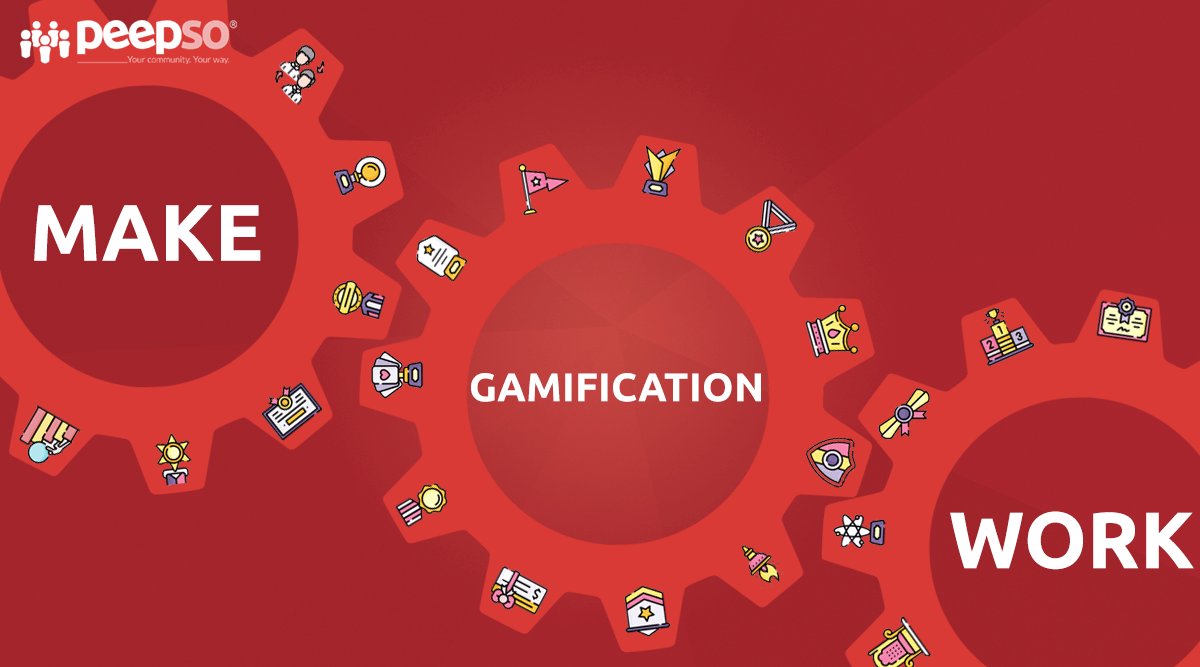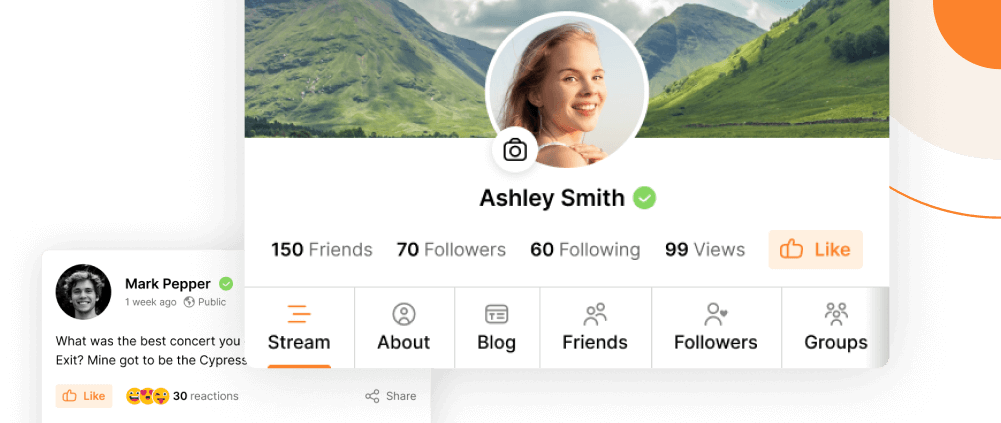We’ve looked previously at why gamification is powerful for online community engagement—today we want to explore the practical steps you can take to make it work for your community.
Many communities shoot themselves in the foot straight away with a lack of advanced planning.
Work backwards from your business goal
Like any good marketing or engagement plan, you need to start at the end:
- What will success look like for us?
- How will this help us meet our community’s goals?
Probably the most common reason to introduce gamification is encouraging participation. This could be getting a new community off the ground, enticing the lurkers, or a hundred others. In this case, the end goal might be:
“Get as many members as possible to participate in at least one discussion, once per month.”
Maybe 90%+ member engagement would be ‘exceptional’, 75%+ would be ‘great’, and so on. With a measurable end goal, you can then get as creative and crazy as you want. As long as you test every idea against your end goal (“Will this help improve participation, specifically?”) then you’ll stay on track.
Pro Tip:
Remember that the end goal of gamification isn’t a direct sales increase; it’s valuable, well-intentioned social behavior and active community contribution. It’s a long-term business game, and at the start it’s all about that quality behavior.
Build achievable and relevant gamification goals
There’s nothing worse than a gamification system that no one understands or that’s too hard to accomplish. It’s a fine balance, but it should be very easy to get started and appropriately more challenging to reach each new level—if it’s too hard from the outset, expect growing frustration and demotivation among members.
But “challenging “ doesn’t need to mean complex. For example, progress could be marked by the amount of time devoted to the game: make the activity harder by rewarding those who put in the most time. Ensure everyone understands exactly what’s required to earn badges, titles, or points from the start.
Remember to plan for the long-term
The ultimate goal of your community isn’t just engagement, it’s entrenchment. By making users feel valued and integral to the community, you’ll inspire them to keep returning after ‘game over’ and take your community to the next level.
Foster genuine competition and aspiration
Competition for rewards is integral to a successful gamification strategy. Rewards could include:
Levels, ranks & titles
Most gamification systems employ some kind of ‘levelling up’. This is crucial for ongoing participation—getting a higher level than your friends or topping leaderboards gives us a huge dopamine rush and sense of accomplishment.
The key here is to tailor to your niche, don’t just use generic levels like ‘Level 1’ and ‘Level 33’. For example, for a DIY community you might start at ‘Apprentice‘ and climb towards ‘Master Mason’. Members should aspire towards an awesome title.
Usually you’ll want to show participants how they’re scoring relative to the competition. Leaderboards are great for this, but aim to have members competing against similar ‘opponents’, as this creates the most motivation for success. If level ones are seeing the level two hundred and fifties on the leaderboard, they might get discouraged or think it’s a waste of time! Refreshing leaderboards every hour/day/week can also incentivize newer players.
Badges
Badges are slightly different. These can be awarded outside of the specific ‘game’. Achievements like going the extra mile in some way, consistently providing fast answers to questions, logging in everyday… Badges can act as small but powerful tools for participation—because once you’ve got one, you don’t want to lose it!
Real-life awards
Depending on the maturity of your community, it might be appropriate to offer direct rewards: reach a specific goal and get a specific reward! This will often be discounts or special access to your products.
“Mystery prizes” are another option, where members compete for a specific goal knowing they’ll get something—this often works even better than a specific reward, because the anticipation of surprise is so powerful.
At the end of the day, making gamification work comes down to understanding your members and what will motivate them, and having a plan in place. Hopefully this has given you the nudge you needed to get your ‘game’ off the ground!


Reactions & comments
Comments